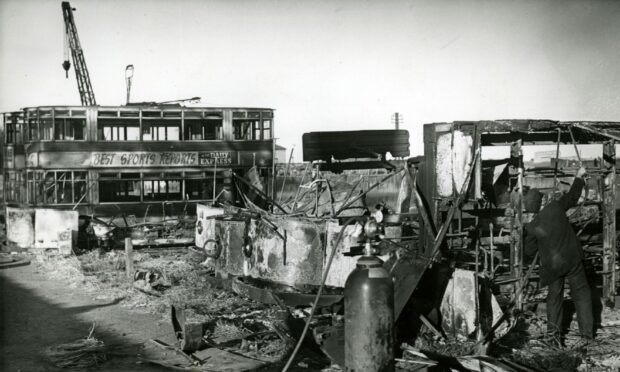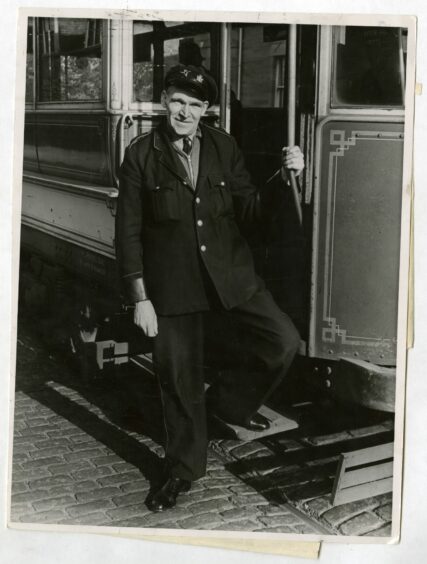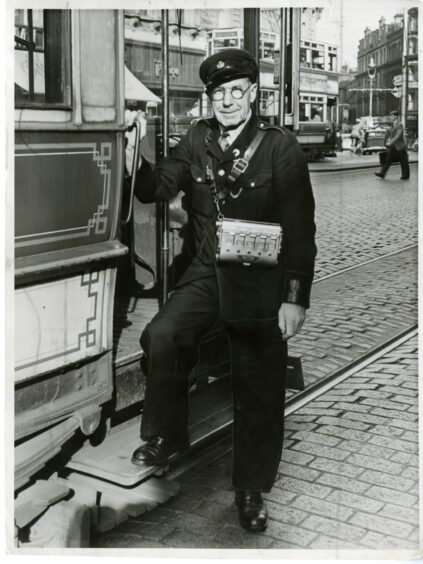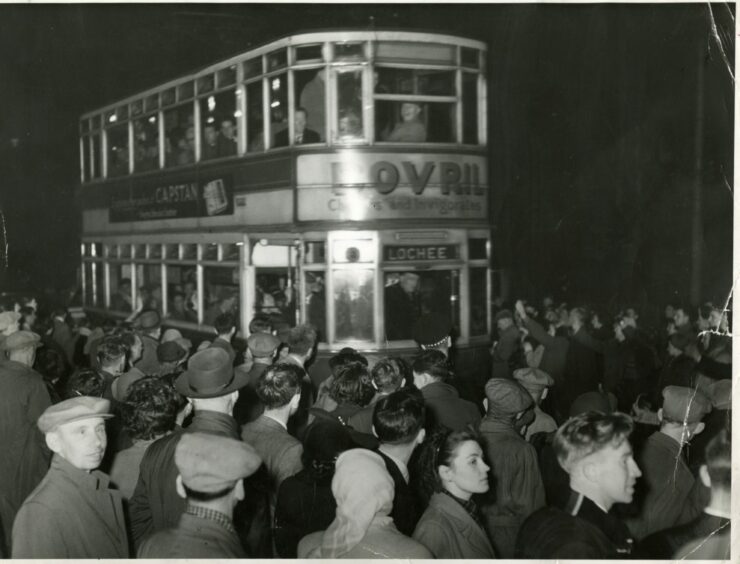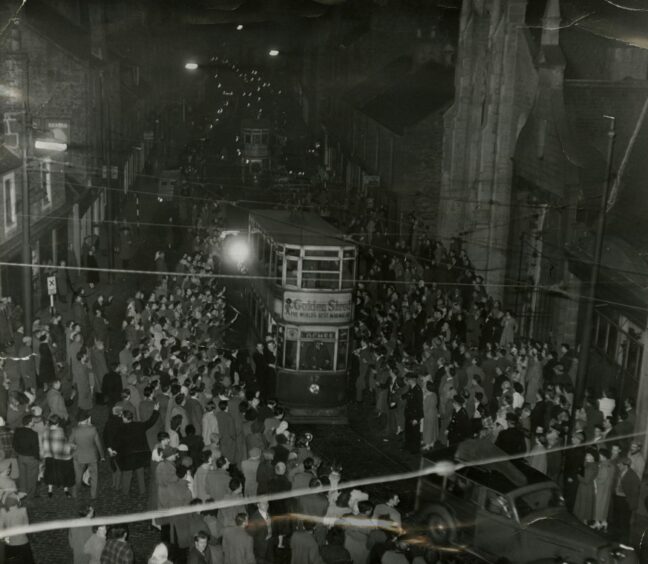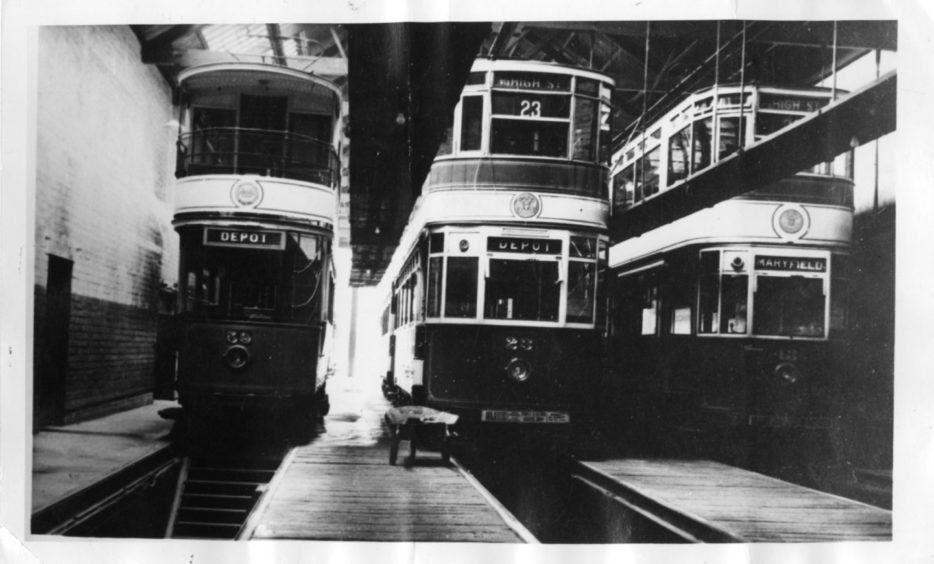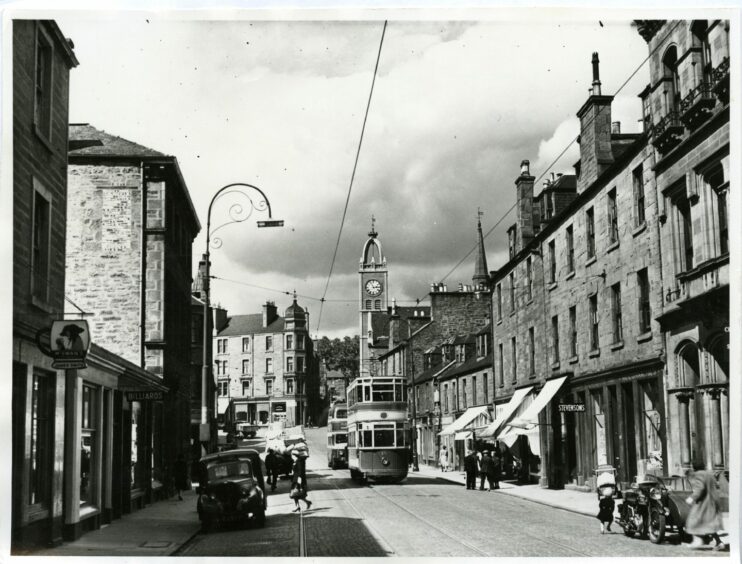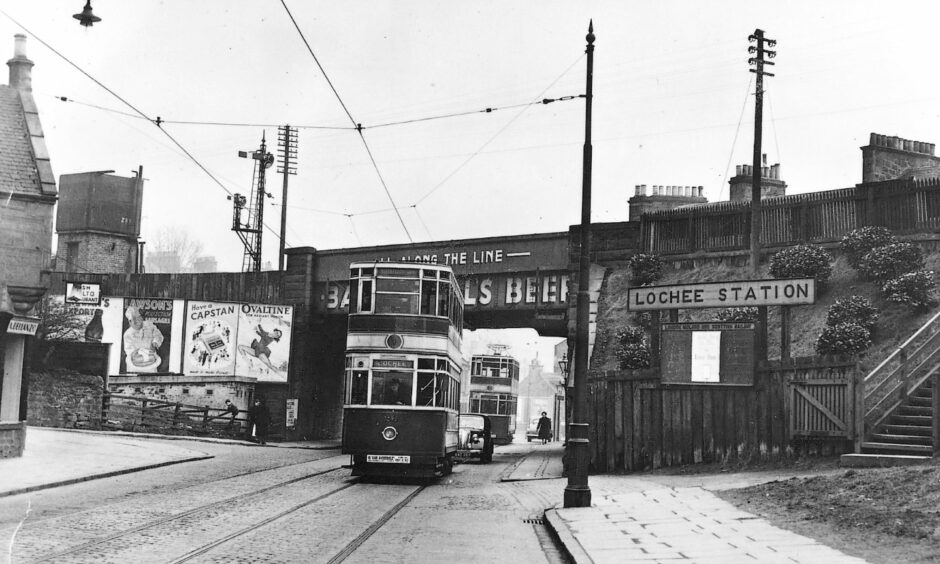More than 5,000 people witnessed Cab 23’s final journey to Lochee which ended in a bonfire of obsolete Dundee trams 65 years ago.
Here was the closing chapter of the 79-year story of Dundee’s trams era that began with a horse-drawn vehicle trundling from Albert Square to Windsor Street.
Driver David Bates, 59, and conductor George Maxwell, 54, were the crew of Cab 23 which left Maryfield depot at one minute past midnight on October 21 1956.
Mr Bates and Mr Maxwell had a combined 66 years service between them.
Cab 23 however was the baby of the fleet at just 29.
Destination was Lochee.
The street was filled and people stood at windows to pay their last respects.
Inside the depot was 84-year-old Alexander Soutar.
He was a conductor on horse trams and steam cars in the 1890s.
“I wouldn’t have missed this for anything,” he said.
He went off with his wife to board Cab 23 which was to be the last of all.
End of an era
Dundee transport convener Harry Dickson said: “We are closing a chapter in the city’s history.
“Tomorrow for the first time we will have an all-bus fleet, but the trams have given us almost 80 years’ loyal service and they will not be forgotten.”
The last tram to run to Ninewells came in before Cab 23 left.
Souvenir hunters had been busy and there wasn’t a light bulb or shade left.
Mr Bates and Mr Maxwell climbed up on the step of Cab 23 after each being given the personal gift of a fountain pen to mark the occasion.
The depot doors opened.
A clang on the bell signalled the start of the journey.
Cab 23 got to the corner of Clepington Road and was plunged into darkness as passengers took out the light bulbs for souvenirs.
A couple of fireworks were set off before two motorbikes appeared in front to provide an escort as the tram started to pick up speed.
Cab 23 moved off down to Stobswell where another crowd was gathered.
Down Albert Street, King Street and into Murraygate the tram rolled to cheers from people who were hanging out windows to hear that last familiar rattle.
The track was now lined 10-deep by people waving and cheering.
A cascade of pennies were thrown on to the track in Reform Street.
A crowd of bus drivers and conductors stood beside their vehicles at the corner of Court House Square.
Was this the new order ready to replace the old?
Cars were packed up both sides of the road up past Dudhope Park.
Mr Bates said: “I’ve been held up before, but never like this.
“Hogmanay hasn’t a look in tonight.”
The Lochee tram route was one of the most interesting, partly because it was so hilly, and partly because of the characters who either travelled the route or drove the trams.
They were stuck at the top entrance to the park.
The 10-minute hold up was down to an eager collector who tried to take the chain off the leading tram which had dropped down and earthed the vehicle.
The driver couldn’t get near his fuse box for repairs.
The procession could have ended there and then but for another tram which worked in behind the first and shunted it up the road.
Amazing scenes in Lochee
Cab 23 followed behind and made the turn into Logie Street.
There followed amazing scenes in Lochee High Street.
A solid mass of people were cheering and more were throwing money.
Some were outside in their pyjamas.
Cab 23 stopped at the terminus where people ripped, tore, tugged and hewed the interior of the tram in their frenzied quest for a souvenir.
One lad jumped on the front and made off with the windscreen wiper!
Destination signs, fares boxes, lamp shades, bulbs and seats were all taken as the tram arrived at the depot to a last cheer.
That’s when the crowd burst into song.
We’re No Awa’ Tae Bide Awa’ and Will Ye No Come Back Again.
The door swung behind the tram and it was all over.
For the final time.
Mr Bates climbed down from his cab.
“Ah well, that’s that,” he said.
“Ready to start in the bus driving school in the morning.”
Passengers and watchers were given the chance to buy postcards of the last tram and its crew afterwards for sixpence.
They would cost sixpence extra if autographed by the driver and conductor.
Depot fell silent
A Courier reporter witnessed the rousing scenes.
Then the quiet.
He wrote: “I looked round the now silent depot.
“The familiar green and white vehicles waited, as it were, with a calm, detached air.
“Today they go on the back of a lorry to a breakers’ yard.
“The city streets will be quieter but I will never forget the night I saw an old friend go down.”
The trams were piled up and burned, without tears or ceremony, in a field at Marchbanks.
The legacy of Cab 23 lives on in Lochee.
A High Street pub is called The Last Tram.
Dundee graffiti artist Syke – real name Symon Mathieson – also included an image of a double-decker tram in a mural at Lochee United’s ground, Thomson Park.
Author and historian Dr Norman Watson said: “At their peak in the 1930s, 79 tramways were in operation around the city.
“But mid-twentieth-century Dundonians considered trams old fashioned, costly to run, too slow and an impediment to the growing volume of other traffic – in the manner that the city’s ancient gates had presented a traffic obstacle to increasingly-pompous carriages two centuries earlier.
“One survey in the early 1950s showed that 95% of daily passengers in Dundee preferred buses to trams.
“So in 1956 what remained of Dundee’s one-time fleet of double-deck trams was sold off as scrap – the last tram coming to a halt at one minute past midnight on October 21 of that year.
“Inquiries over whether they could be reintroduced to Dundee’s streets have come to nought, but with civic fathers and mothers looking at ways to ease the commuter traffic burden on the city and its impact on the environment, priorities for better public transport usually involve a hazy timetable for the reintroduction of these clattering urban giants.”
More like this:
